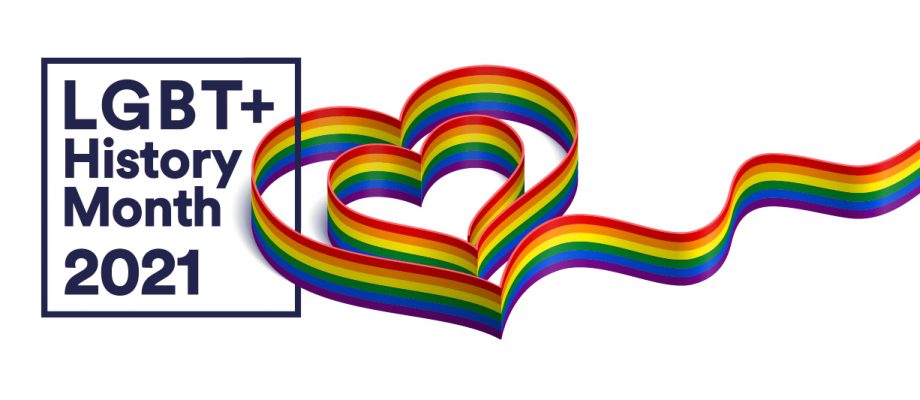February 16, 2021, by School of Medicine
LGBT+ History Month

February marks LGBT+ History Month, a time to learn about and acknowledge the history of LGBT+ people. We consider the marginalisation faced by this community, and the momentous strides taken towards equality, as well as acknowledging the remaining steps toward an equal future that we need to take. The LGBT+ community has long been viewed as a homogenous group of people who are other to “everyone else,” often perceived in only the stereotypes of effeminate, camp men and butch, masculine women, despite enormous variation of experiences, presentations, and identities across this community.
LGBT+ history is vast and complex, especially around healthcare, with many key events taking place in the past 50 years. Homophobia in science, healthcare, policy, and the media played a key role in the AIDS epidemic of the 1980s representing AIDS as a ‘gay disease’, only serving to escalate discrimination and stigma and restrict medical intervention. HIV/AIDS has decimated the community, taking the lives of 32.7 million people, and directly impacting the lives of millions more since the condition was officially recognised 40 years ago. From this devastating loss of a generation, among LGBT+ people anyone older than 35 is typically considered a community “elder.” It is also vital to acknowledge the mental health impact of the AIDS crisis associated with this loss, and the pervasive homophobia surrounding it that our LGBT+ elders who lived through this traumatic time face.
Although a strong stigma lingers around those most commonly affected by HIV, the healthcare available for people with HIV has improved enormously thanks to the persistence of LGBT+ activists and allies including groups like ACT UP and Queer Nation. Today HIV is treatable and more manageable, with many people living long lives with the condition. With effective treatment lowering the viral load of HIV, an undetectable viral load means the virus is untransmissible through sex, significantly lowering the rate of transmission.
The homophobic attitudes towards AIDS in the UK were in no way helped by the enactment of Section 28 in 1988 which criminalised any suggestion that homosexuality is acceptable. This legislation restricted any positive representation of LGBT+ people and the vital message of acceptance, particularly in education settings. Multiple legal attacks were made using Section28 stopping the funding of some HIV/AIDS focussed public health initiatives. Today, the discourse around Gender Recognition Reform reflects the rhetoric around Section 28, suggesting we could be approaching another era of censorship and bigotry under the guise of protecting children.
It can be truly challenging to repeatedly have your identity, legal rights, and sense of belonging questioned and ridiculed by the national media or even by those who should be our advocates. At times it can feel like history repeats itself within this community, as battles once faced by LGB people, are now redirected towards transgender and non-binary people. As well as the re-emergence of possible censorship, LGBT+ people have faced pathologisation with homosexuality included in the DSM until the 3rd edition in 1974 only removed following the incredible activism of the Gay Liberation movement of the late 60s to mid-80s. Meanwhile transgender people remain pathologised in the ICD-11 with the diagnosis of ‘gender incongruence’, previously listed as Gender Identity Disorder. Although at present this diagnosis for gender incongruence can enable access to medical intervention to reduce gender dysphoria, it is likely this pathological perspective will evolve further in the next 50 years.
As LGBT+ visibility is increased with the age of the internet, and access to equal rights has improved through the Marriage (Same Sex Couples) Act 2013 and the Equality Act 2010 in the UK, it is easy to believe we have made it to a point of equality and homophobia is a thing of the past. However, there is still a long way to go in the fight for equality. Homophobia and transphobia are still common within society, negatively impacting the health, wellbeing, and livelihoods of LGBT+ people. Despite repeated condemnation of harmful conversion ‘therapy’, this remains legal in the UK. In healthcare, homophobic prejudice is demonstrated by 14% LGBT+ people including over 30% of trans and non-binary people delaying or avoiding accessing healthcare services because they anticipate discrimination and mistreatment from healthcare professionals. This anticipatory concern is not unfounded with Stonewall’s LGBT in Britain report 2018 finding 25% of LGBT+ people experience inappropriate curiosity from clinicians, 10% have been outed by healthcare staff without their consent, while 16% of trans people and 2% of cisgender LGB people have been refused healthcare for being LGBT+. The future of LGBT+ inclusive healthcare needs to advocate for equitable treatment of LGBT+ patients and carers, ensuring equal access to healthcare services free from discrimination and prejudice – something we certainly do not yet provide.
Although some LGBT+ history is behind us, much of it continues to be made today and tomorrow. The healthcare community is not an innocent party in LGBT+ history nor in the present experiences of LGBT+ people, but it could become a key ally in the future with the dedicated support of all healthcare professionals.
No comments yet, fill out a comment to be the first

Leave a Reply